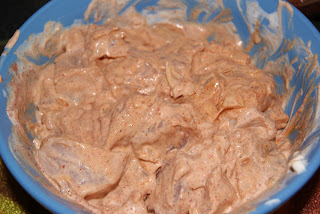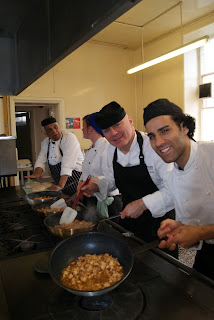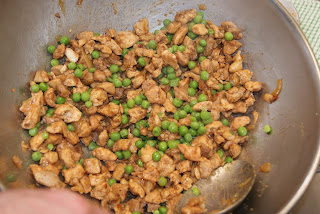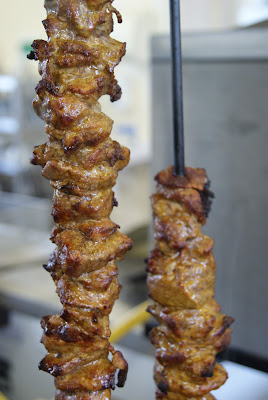This is the second attempt to make
this delicious Indian dish. If you enjoyed the recipe I posted in March, you
should also try this one. It could be good opportunity to observe how spices
can change the taste of the dish. Here is another recipe for Kofta Curry: same
main ingredients, same preparation method, but totally different experience for
your taste buds. (Recipe by Chef Clary
Wilson)
Ingredients for Koftas (meatballs)
300g lean minced beef/ lamb/
goat/ chicken
1 tsp kebab masala
1 egg
½ tsp salt
½ tsp ginger powder
½ tsp garlic powder
1 tsp garam masala
1 tsp tandoori masala
½ tsp black pepper
¼ medium sized onion- chopped
finely
1 Tbsp coriander- chopped finely
Mix all the ingredients in a
large bowl and marinade for a while. When the mixture absorbs the flavours, make
walnut size meatballs and pre-bake them in the oven (at 180C) until light
brown. It will help to preserve the shape of the koftas and prevent them from
falling apart when dropped into the curry sauce.
Ingredients for the sauce:
50 ml canned tomatoes
150 ml onion sauce (or 1 medium
sized onion- chopped finely)
½ green chilli chopped finely
1 tsp tandoori masala
½ tsp ginger powder
½ tsp garlic powder
½ tsp garam masala
½ tsp salt
1 Tbsp coriander- finely chopped
2 Tbsp natural yoghurt
2 Tbsp vegetable oil
Ketchup- to taste
Put tomatoes, yoghurt, chilli, coriander
and dry spices in a bowl and mix together to make a paste.
Heat up the oil in a large heavy-based
pan. Fry the onion sauce and prepared paste, gradually adding a table spoon at
a time and mixing together until the sauce turns lightly brown. (If you are using chopped onion instead, fry
it gently until soft and light brown before mixing the paste in).
Drop pre-baked meatballs into the
sauce and shake the pan. Do not stir as it may break the koftas. Keep the lid
on and simmer for 25-30 minutes on low heat. Few
minutes before taking the dish off the heat add some ketchup to sweeten the
sauce and garnish with fresh coriander. Serve
with rice or Indian flat breads. Enjoy!














































